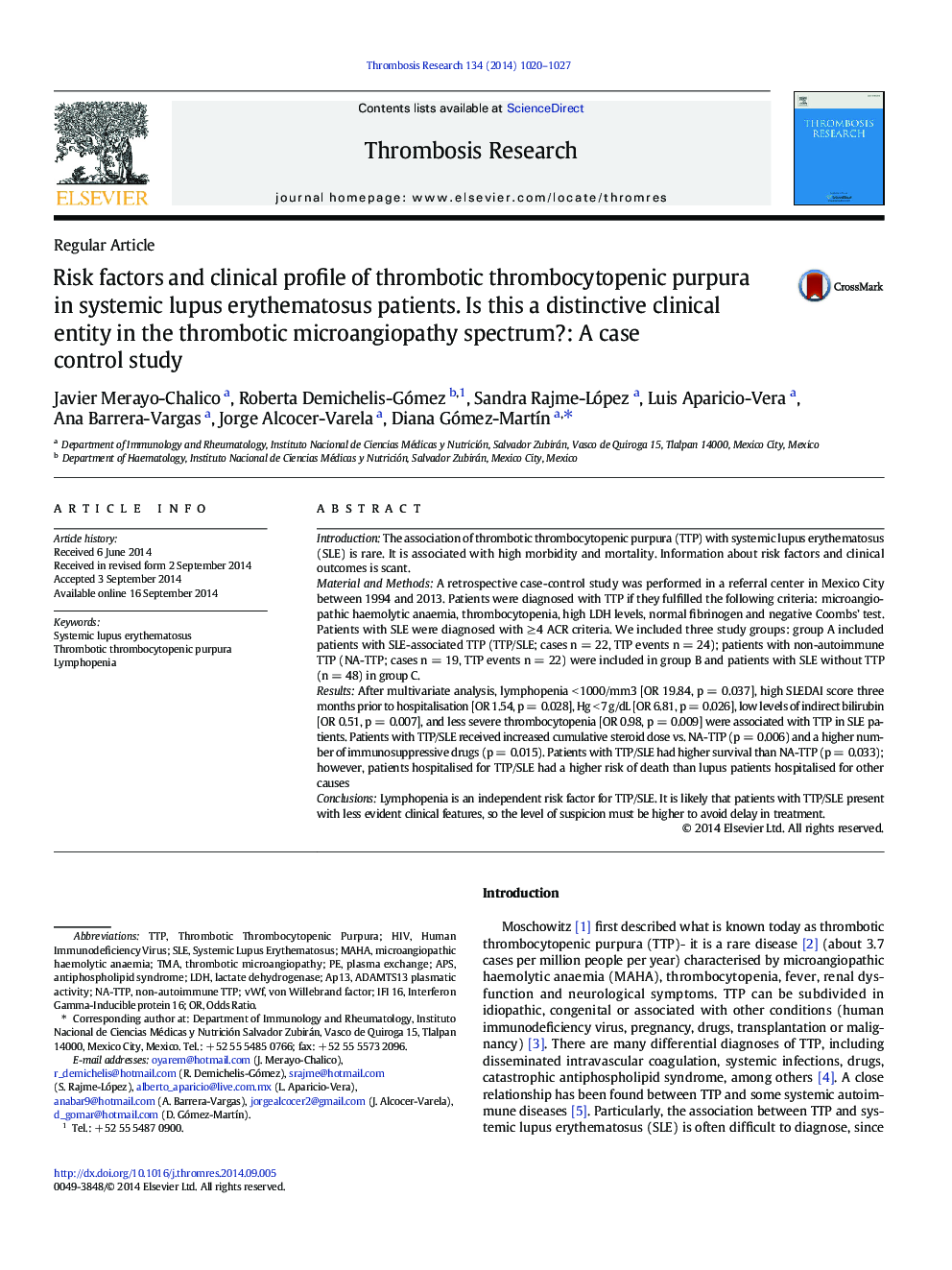| Article ID | Journal | Published Year | Pages | File Type |
|---|---|---|---|---|
| 6001715 | Thrombosis Research | 2014 | 8 Pages |
â¢TTP/SLE patients show less evident parameters of haemolysis at presentationâ¢TTP/SLE patients present with higher scores of activity index (SLEDAI)â¢Lymphopenia is a novel independent risk factor for TTP in SLE patientsâ¢TTP/SLE patients constitute an “atypical” subgroup of TMA
IntroductionThe association of thrombotic thrombocytopenic purpura (TTP) with systemic lupus erythematosus (SLE) is rare. It is associated with high morbidity and mortality. Information about risk factors and clinical outcomes is scant.Material and MethodsA retrospective case-control study was performed in a referral center in Mexico City between 1994 and 2013. Patients were diagnosed with TTP if they fulfilled the following criteria: microangiopathic haemolytic anaemia, thrombocytopenia, high LDH levels, normal fibrinogen and negative Coombs' test. Patients with SLE were diagnosed with â¥Â 4 ACR criteria. We included three study groups: group A included patients with SLE-associated TTP (TTP/SLE; cases n = 22, TTP events n = 24); patients with non-autoimmune TTP (NA-TTP; cases n = 19, TTP events n = 22) were included in group B and patients with SLE without TTP (n = 48) in group C.ResultsAfter multivariate analysis, lymphopenia < 1000/mm3 [OR 19.84, p = 0.037], high SLEDAI score three months prior to hospitalisation [OR 1.54, p = 0.028], Hg < 7 g/dL [OR 6.81, p = 0.026], low levels of indirect bilirubin [OR 0.51, p = 0.007], and less severe thrombocytopenia [OR 0.98, p = 0.009] were associated with TTP in SLE patients. Patients with TTP/SLE received increased cumulative steroid dose vs. NA-TTP (p = 0.006) and a higher number of immunosuppressive drugs (p = 0.015). Patients with TTP/SLE had higher survival than NA-TTP (p = 0.033); however, patients hospitalised for TTP/SLE had a higher risk of death than lupus patients hospitalised for other causesConclusionsLymphopenia is an independent risk factor for TTP/SLE. It is likely that patients with TTP/SLE present with less evident clinical features, so the level of suspicion must be higher to avoid delay in treatment.
